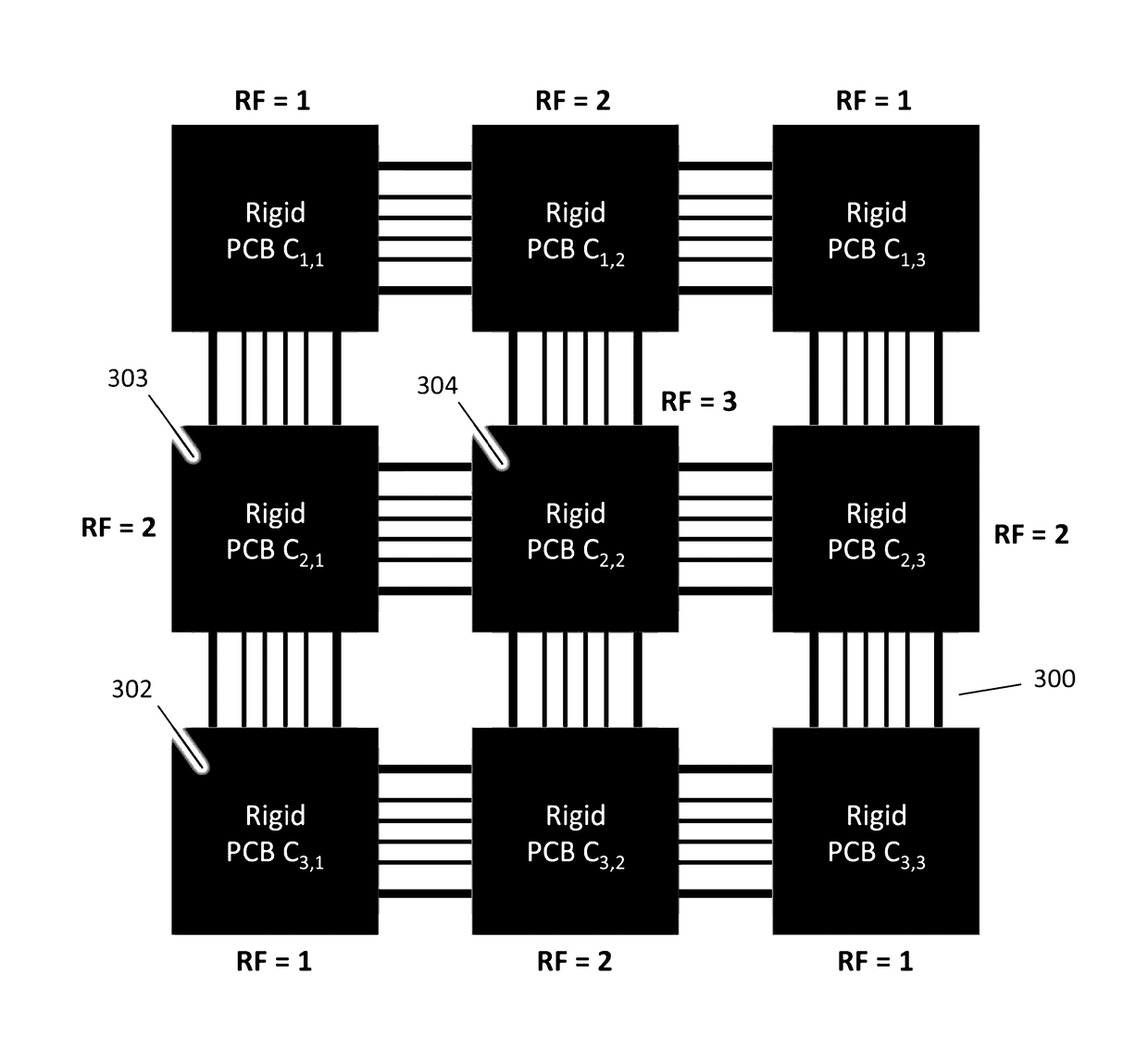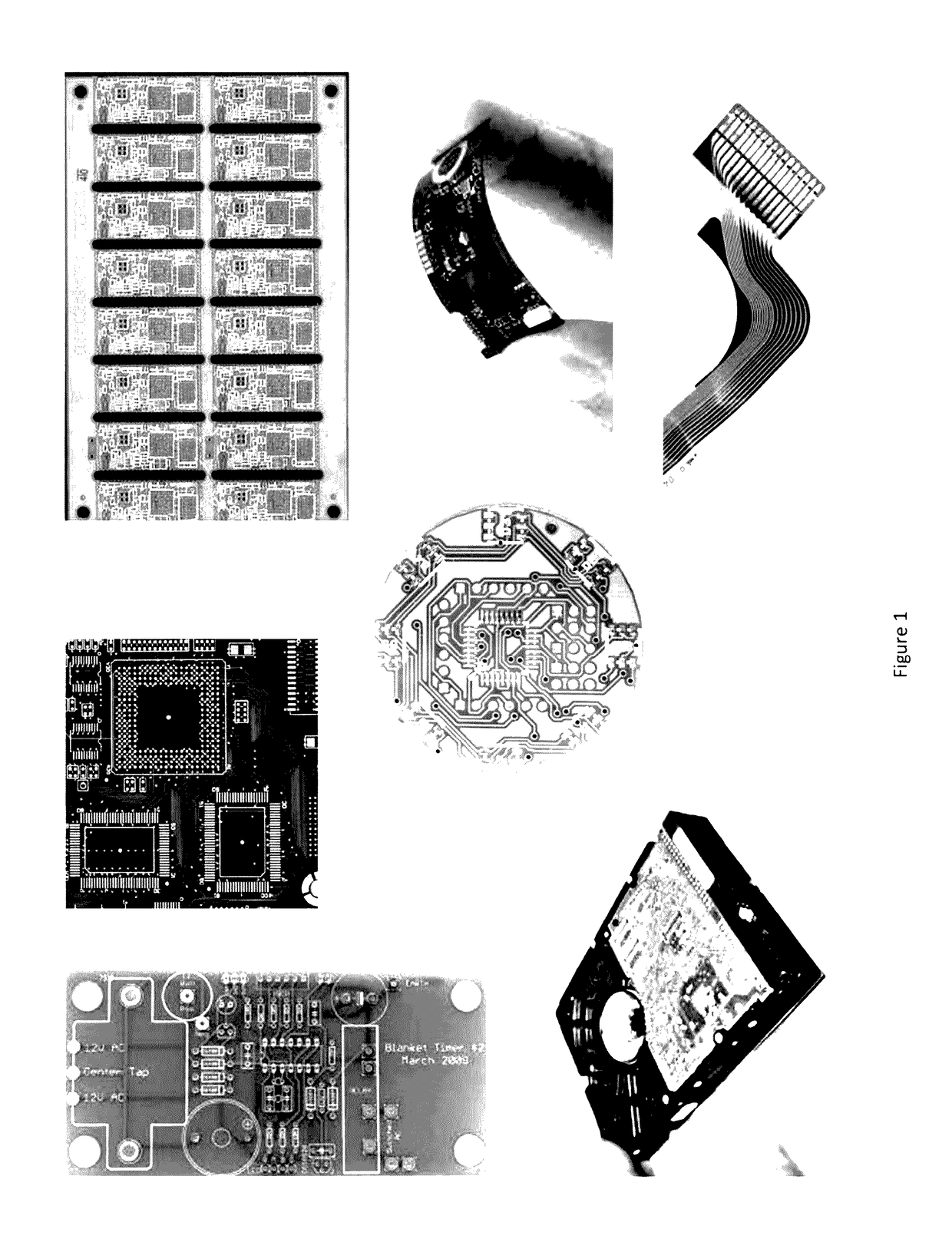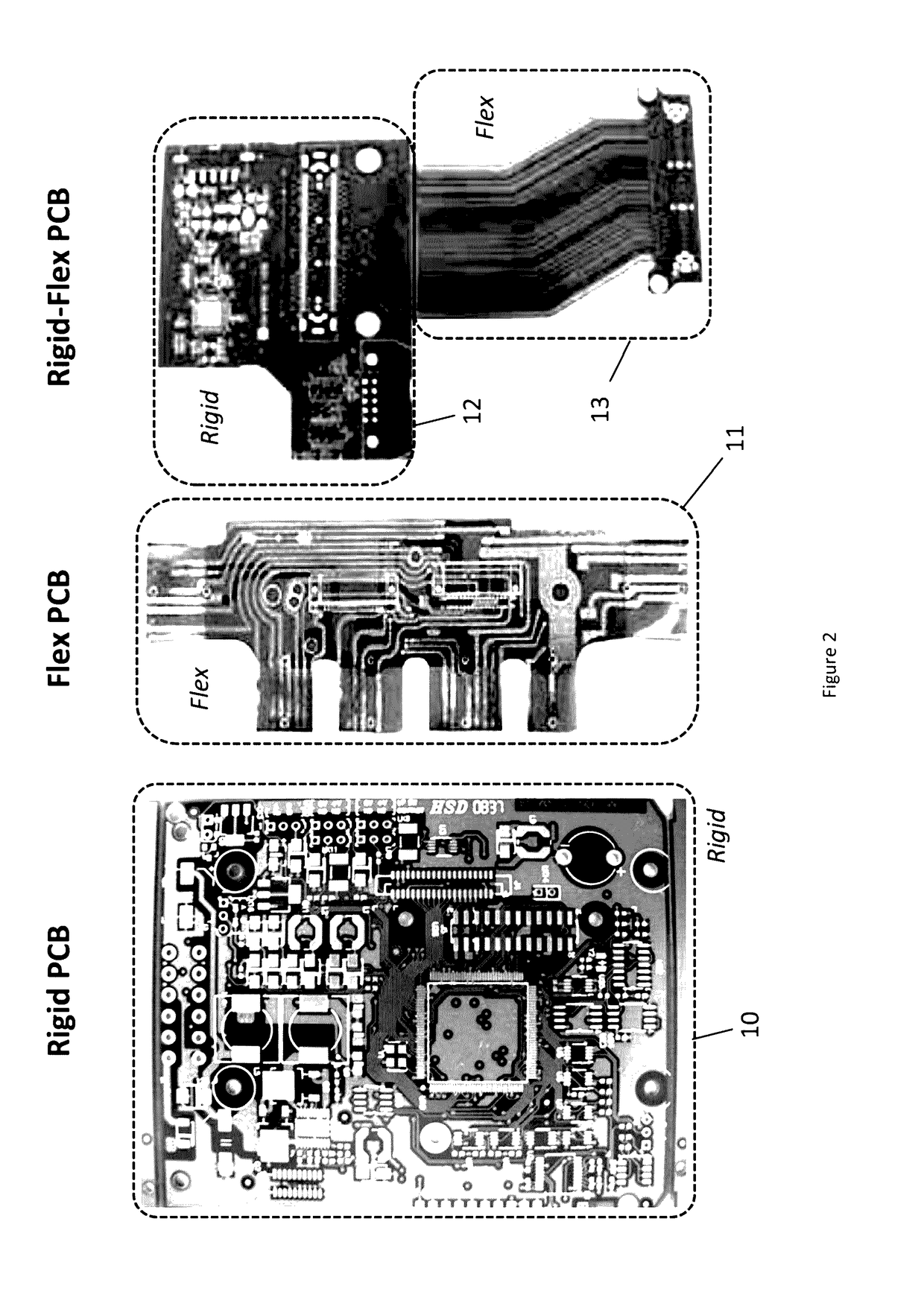One
disadvantage of rigid PCBs is they are intrinsically planar and cannot bend to fit curved surfaces.
As such they are not considered good a good solution for bendable or wearable applications.
Although an entire electronic
system can be integrated onto a single rigid PCB, in many instances, the resulting PCB is too large or has the wrong shape to fit in available space.
These parasitic elements also can adversely
impact power distribution and affect
voltage regulation accuracy or stability.
Moreover, because the flexible pads are positioned in various locations across a patient's body, normal application of the product repeatedly subjects the cable to movement, twisting and pulling.
Despite these precautions, electrical connections subjected to repeated flexing, bending, and wire-pull exhibit poor long-term
survivability and suffer frequent reliability failures.
As a result these defective or weak solder joints exhibits disproportionately higher failure rates than good solder joint 50, especially when subjected to wire pull.
In applications with repeated movement and flexing, plug and socket connections suffer several failure
modes—the most common failure comprising a case where the plug comes loose from the socket and no longer makes a reliable connection between the plug pins and the socket's conductors.
Unfortunately, clamping sockets eliminate one failure mode but introduce a new failure mode in the cable.
Specifically, if the plug is held tightly in place, during movement, twisting, or pulling, the connection between the
ribbon cable and the plug will fail.
Regardless of whether repeated movement or flexing results in an unplugged connector or a broken cable, the
interconnection between PCBs will fail and an open circuit will result.
In systems comprising a large number of rigid PCBs, e.g. in a series of PCB's used to cover a large area, the number of interconnections further exacerbates the problem with each connector statistically increasing the probability of
system failure.
For example, if a control wire is broken, the system will not be able to receive commands.
In cases where two wires are required to carry the required current, breakage of either wire will cause a single wire to carry too much current leading to excessive
voltage drops, overheating, instantaneous wire fusing, or
electromigration failure over time.
Insuring PCB connection reliability is especially problematic in applications subject to repeated cycles of flexing.
As described, flex PCBs are limited to “rarely-flexed” applications because of the mismatch between the flexible PCB and the rigid components mounted on it.
The problematic use of flex circuits, i.e. flex PCBs with mounted components in applications with repeated flexing cycles, damage and breakage occurs because the components themselves do not bend even though the PCB does.
By subjecting the PCB to larger stresses or additional flexing cycles, the size of the crack will grow larger.
Cracking can also occur on solder joints mounting passive components such as resistors and capacitors.
The combination of rigid and flex PCBs further exacerbates the problem by requiring connections between the two.
Such connections are subject to the same socket-plug failures as ribbon cables described previously.
The main
disadvantage is due to the mismatch in mechanical properties between the rigid and flex layers, it is easy to rip the flex PCB by any force applied perpendicular to the plane created by the PCBs near the bar shaped
interconnection area, i.e. in the z-direction as illustrated in drawing 170 of FIG. 12A where rigid PCB 171 connects to flex PCB 173 along a thin bar shared intersection expanded in cross section 173.
From an
electronics system perspective however, such distributed circuits, i.e. ones where pieces of the circuit are implemented on different PCBs, suffer from numerous system reliability risks associated with communication among the various components.
In such distributed systems, tear 193 to flex PCB 191B may not just sever rigid PCB 190C from the rest of the system but likely can cause the entire system to malfunction or the
software to
crash.
Such distributed systems are sensitive to
single point failures and offer little or no protection from mechanical damage to the interconnections between its multiple rigid PCBs.
By contrast, in distributed electronic system 189C also in FIG. 13B, tear 194C in the flex PCB results in an open circuit in one or more conductors carrying control signals 193B resulting in system malfunction, affecting normal operation and depending on the function of the interrupted signals, possibly resulting in a total
system failure.
In the event that a PCB is immersed in or subjected to any conductive or slightly
conductive fluid, an electrical short may result, either impairing or potentially damaging a circuit or system.
In wearable
electronics, circuitry and PCBs may also be subjected to rain and to body sweat.
Sweat is especially problematic because it contains salt and other electrolytes making it more
electrically conductive.
Failures may comprise electrical shorts or because of
corrosion may also result in electrical open circuits.
Coating flex PCBs with a protective layer is problematic because the
coating invariably cracks with repeated flexing.
Coating rigid PCBs is beneficial but does not support bendable or wearable PCB applications.
 Login to View More
Login to View More  Login to View More
Login to View More 


